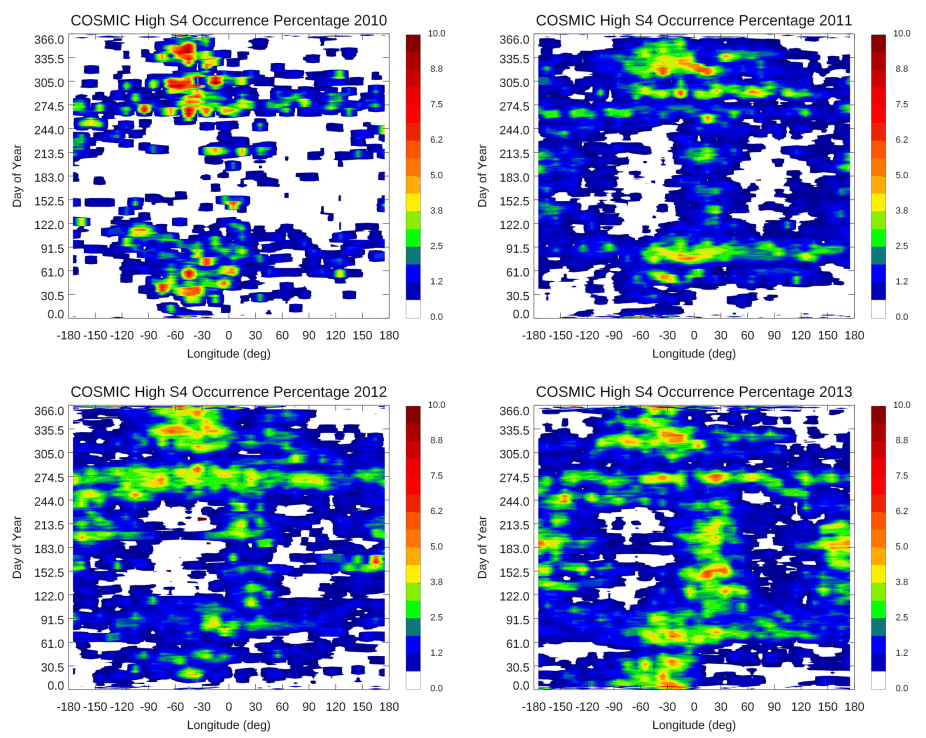Publication Name: Space Weather; First HAO Author's Name: Qian Wu; Authors names as they are listed in article: Qian Wu, Min-Yang Chou, W. Schreiner, J. Braun, N. Pedatella, Iurii Cherniak
A correlation study is performed to investigate possible connections between the stratospheric gravity waves and the ionospheric plasma bubble induced GPS signal scintillations. Using the COSMIC 1 neutral temperature data (10–30 km), we extract gravity wave amplitudes with vertical wavelengths from 2.5 to 10 km within the latitudinal range from 37.5S to 37.5N.

High S4 occurrence (> 0.2) longitudinal and annual variations from 2010 to 2013. The data are binned in 1-day and 10-degree longitudinal grids. The data are selected from 25S to 25N latitudinal and 240 to 450 km altitudinal ranges. The local time range is from 15 to 21 LT.
We then calculated the occurrence of high GPS L1 amplitude scintillation (S4 > 0.2) in the equatorial region (25S and 25N). The high S4 values showed consistent higher correlations with gravity waves at the equator than those away from the equator for all vertical wavelengths between 2010 and 2013. While the peak correlation is only ~ 0.2, the consistency over different wavelengths and years suggests a possible link, which could be through seeding of plasma bubbles and/or modulation of the neutral wind dynamo by gravity waves. We see the need for further study based on statistics of simultaneous observations of gravity waves, ionospheric scintillations, and other ionospheric and thermospheric parameters, which can lead to a better understanding of the plasma bubble formation mechanism.